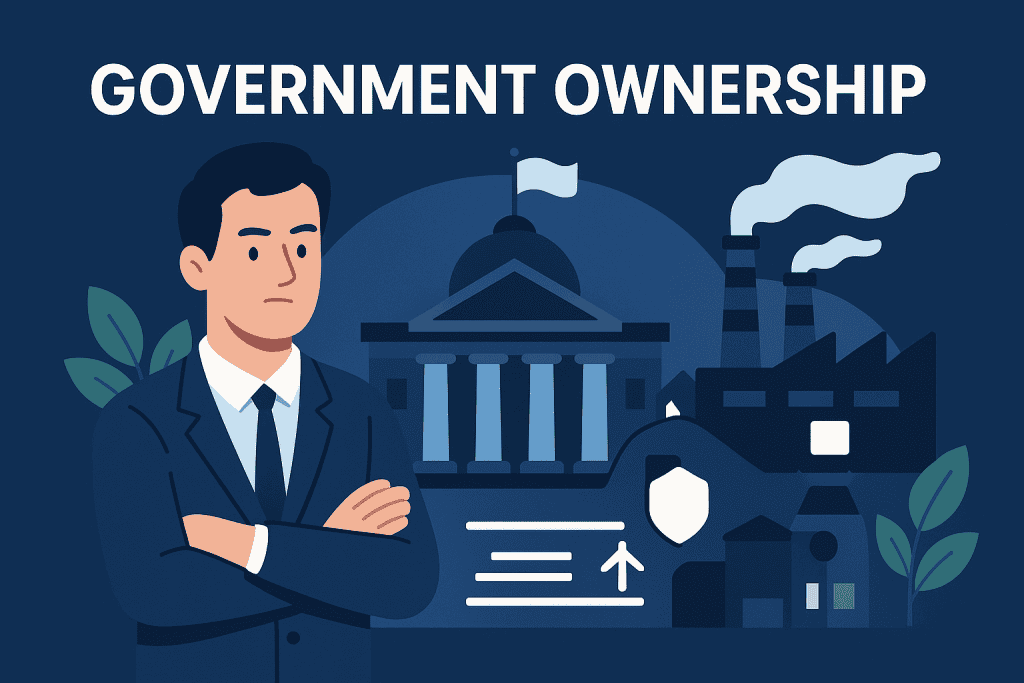
Alt text: A centralized government controls production, distribution, and pricing of all goods.
Overview
A command economy is an economic system where the government exercises comprehensive control over production, pricing, and distribution of goods and services. In contrast to free-market systems—where supply and demand determine what gets produced and at what price—a command economy relies on centralized planning, often executed through state-run agencies. These agencies outline economic priorities, allocate resources, and dictate output quotas across industries.
Understanding this economic model is more important than ever, particularly in today’s evolving global landscape. With rising debates about state intervention, protectionism, and strategic national industries, aspects of command economies are resurfacing even in mixed or capitalist systems. From energy rationing to emergency healthcare responses, many governments now adopt centralized controls during crises, blurring the lines between market freedom and planned intervention.
Moreover, the concept holds renewed relevance as nations re-evaluate their economic dependencies, especially in light of global disruptions like the COVID-19 pandemic and geopolitical tensions. These events have reignited discussions around economic sovereignty, resilience, and long-term sustainability—all areas where command economies, at least theoretically, aim to excel.
In this article, we will explore a defining characteristic of a command economy: its centralized planning. We’ll look into how this approach shapes various industries, impacts innovation and efficiency, and plays out in the real world. Using historical and contemporary examples, we’ll analyze both the benefits and limitations of such a system, offering readers a nuanced understanding of its role in modern economic discourse.
Understanding the Fundamentals of a Command Economy

A command economy operates under a central authority, typically the government, which dictates all major economic decisions. This includes:
- Production Goals: The government decides what goods and services should be produced.
- Pricing Controls: Prices are fixed by central planners rather than market forces.
- Resource Allocation: The state controls how resources, including labor and capital, are distributed.
Unlike a market-driven system, where supply and demand balance prices and output, a command economy relies on a top-down approach. This structure often leads to inefficiencies but can be beneficial in times of crisis or large-scale national projects.
One of the most significant characteristics of a command economy is government ownership and control of resources.
Key Characteristic: Government Ownership and Control of Resources
In a command economy, the government owns the means of production—factories, land, and resources. This control extends to key industries like energy, healthcare, and transportation. The purpose of this structure is to ensure equal distribution of wealth, prevent economic disparities, and prioritize national goals over private interests.
Real-World Examples
| Country | Example of Government Control |
|---|---|
| Soviet Union | Centralized production quotas for industries like steel and agriculture. |
| China (before economic reforms) | State-owned enterprises dominated all sectors, including housing and consumer goods. |
| North Korea | Government dictates all business activities and personal consumption. |
| Cuba | Heavy regulation of businesses, with government-run industries. |
In these economies, private enterprises do not operate freely, and the state ensures that production aligns with national interests. However, this often leads to inefficiencies, as bureaucratic processes slow down decision-making and innovation.
Effects of Government Ownership in a Command Economy

1. Limited Consumer Choices
Since production is based on government planning rather than market demand, consumers often face a shortage of goods or lack variety in products. For example, in the former Soviet Union, citizens had limited options for cars, clothing, and household goods.
2. Price Controls and Market Stability
A command economy avoids the volatility of a market economy, where prices fluctuate based on supply and demand. Governments set prices for essential goods, preventing extreme price hikes. However, this can lead to black markets, where goods are sold at higher prices due to shortages.
3. Restriction of Private Enterprises
Private businesses struggle to thrive in a closed economy with heavy restrictions. Entrepreneurs cannot freely enter markets or compete with state-owned enterprises. This results in slow economic growth and a lack of innovation.
4. Employment and Wage Regulations
In a characteristic of a command economy, the government assigns jobs rather than allowing people to choose careers based on market demand. Wages are also regulated, reducing income inequality but limiting incentives for high productivity.
Changes and Trends in Command Economies
While traditional command economies were rigid and centralized, modern economies have started incorporating market-driven elements. Countries like China and Vietnam have introduced economic reforms while maintaining significant government control.
| Country | Market Adaptation |
|---|---|
| China | Opened trade markets while maintaining government control over key industries. |
| Vietnam | Shifted from a command economy to a mixed economy with private-sector growth. |
| Russia | Transitioned to a market economy but retained government influence over energy sectors. |
These economies are no longer purely command-based but have retained elements of government control in sectors deemed critical to national stability.
Conclusion
What Is One Characteristic of a Command Economy? It is government ownership and control of resources, which dictates production, pricing, and labor allocation. This system ensures national economic stability but often results in limited consumer choices, market inefficiencies, and restricted competition.
While traditional command economies like the Soviet Union and North Korea showcase strict government control, modern economies such as China and Vietnam have introduced market-oriented reforms, blending government oversight with elements of a free market.
Understanding command economies is essential for evaluating global economic trends, trade policies, and investment strategies. As economies evolve, the ongoing debate between government regulation and market freedom remains a critical issue in economic policymaking.
Key Takeaways
- Government Ownership & Control: A command economy is characterized by government ownership of resources, restricting private business growth.
- Limited Consumer Choices: Since production follows central planning, consumers face limited options and price controls.
- Economic Reforms: Some countries, like China and Vietnam, have shifted toward a mixed economy, integrating market-driven strategies.
Resources
- Britannica. Command Economy.
- Investopedia. Command Economy Definition.
- Finance Strategists. Understanding Command Economies.
- The Balance Money. Characteristics, Pros, Cons, and Examples of a Command Economy.
- ThoughtCo. Definition of a Command Economy.
